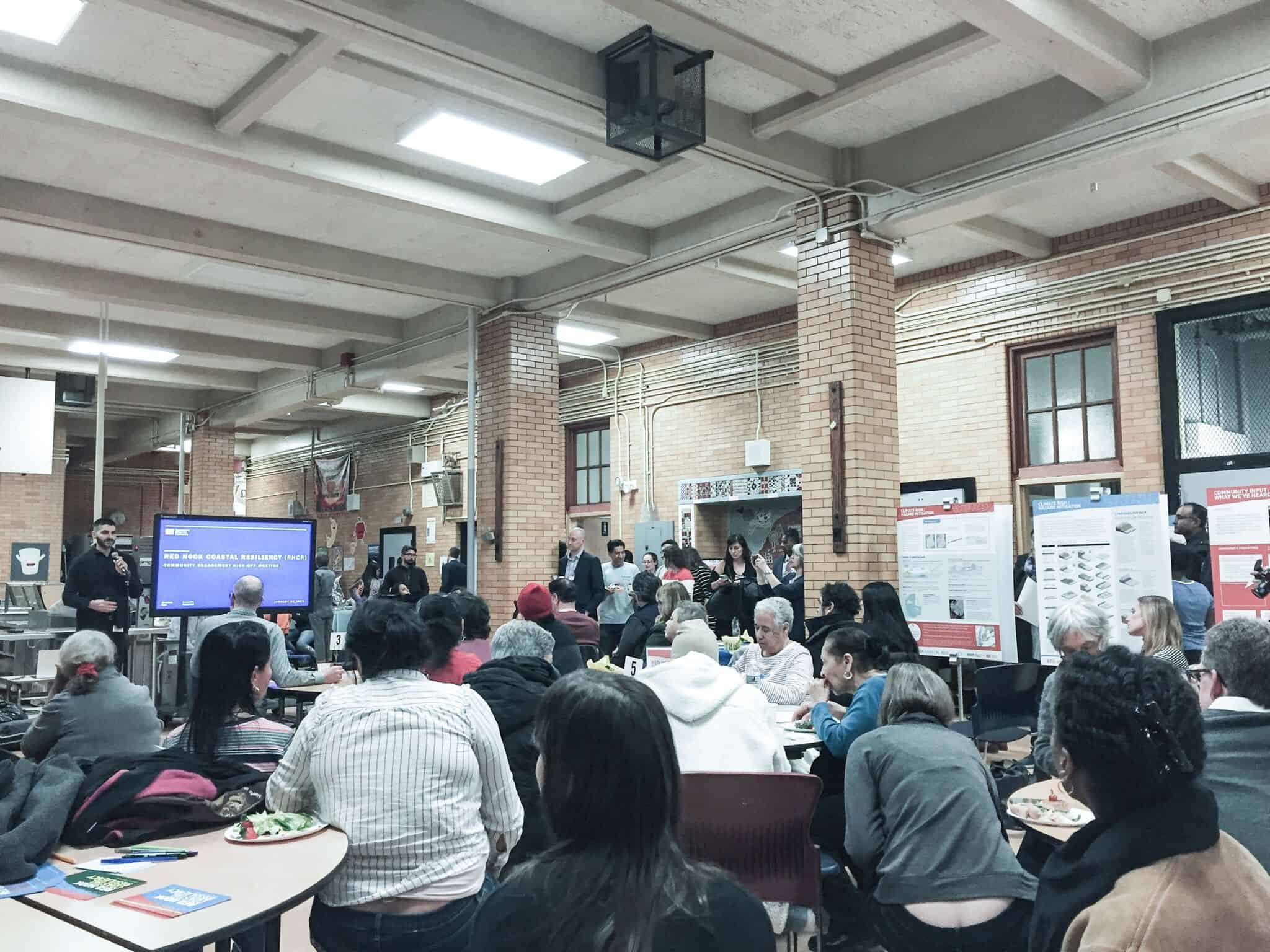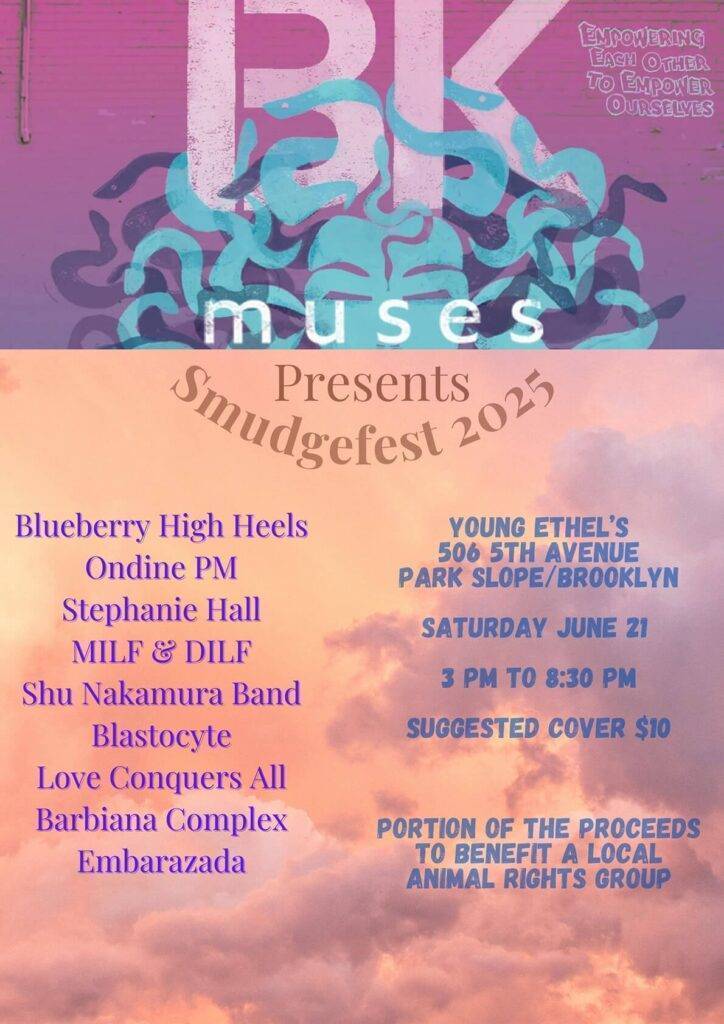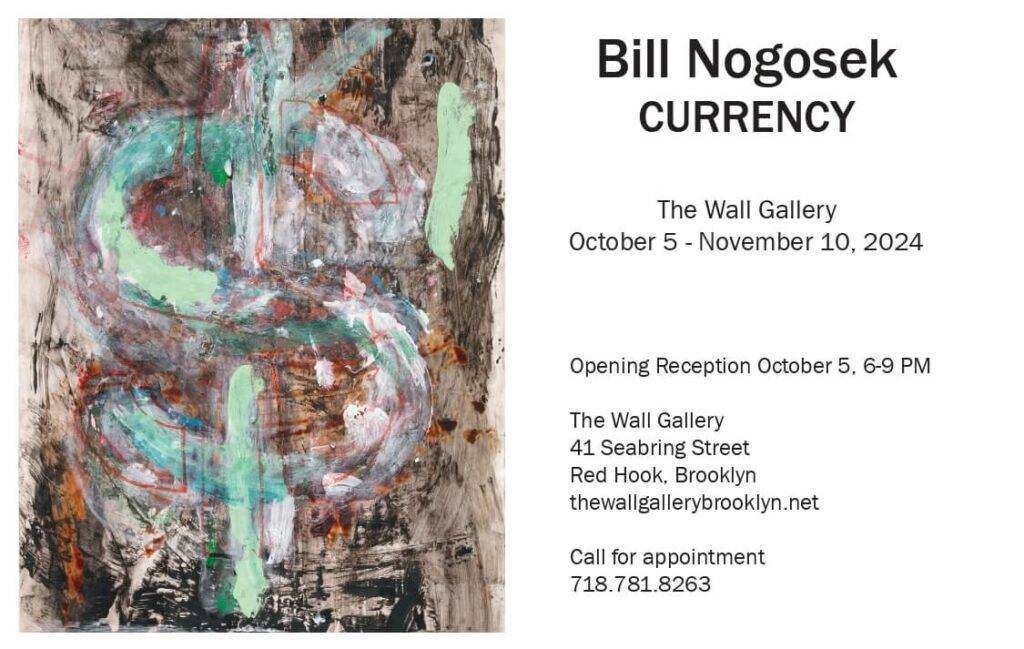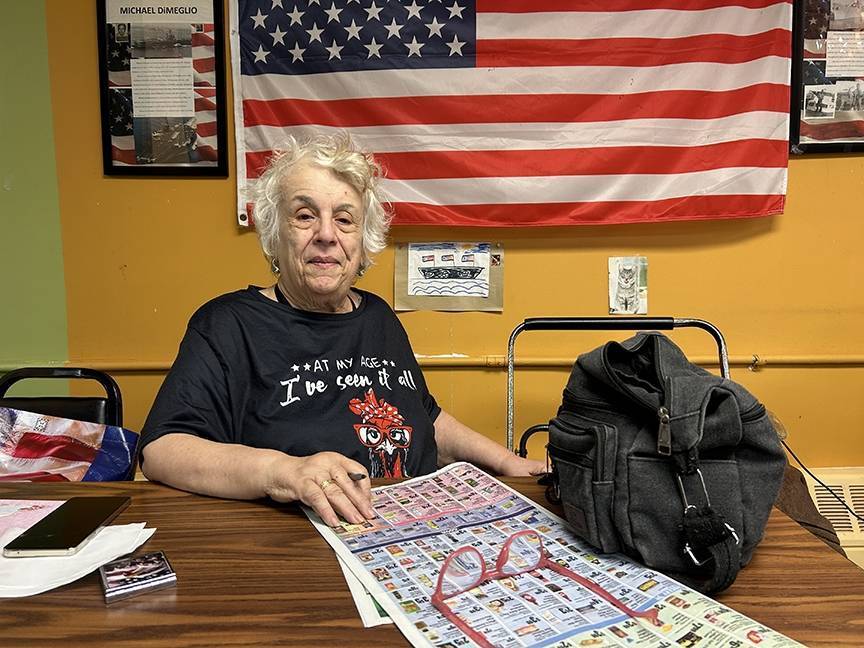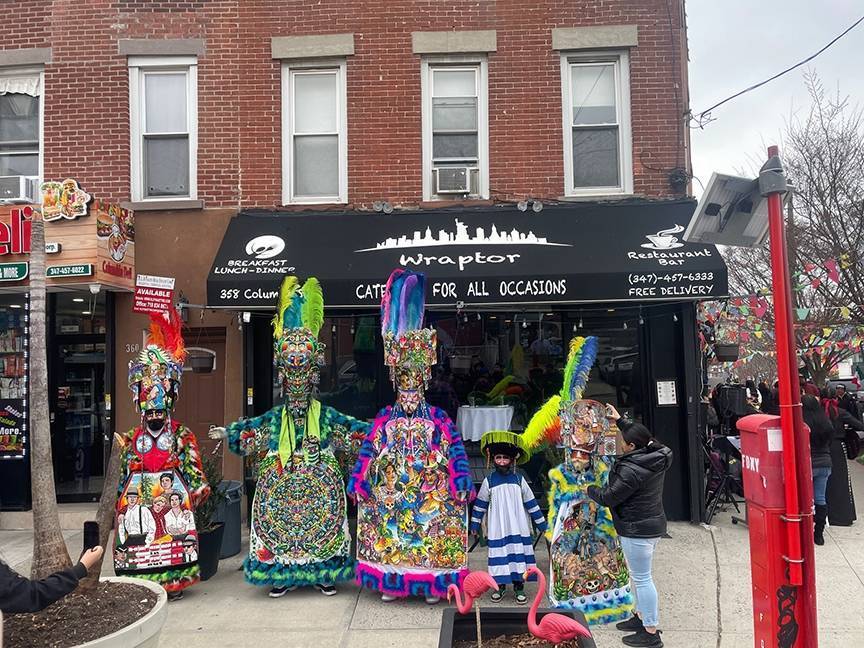On January 29, the Department of Design and Construction (DDC) hosted the first Red Hook Coastal Resiliency (RHCR) community meeting at PS 676, kicking off a yearlong public engagement process that will culminate in the design of the neighborhood’s long-awaited flood protection system. Landscape architecture firm Grain Collective, alongside local partners RETI Center and Aesthetic Soul Community, will facilitate outreach throughout 2020.
The RHCR project will build upon 2017’s Red Hook Integrated Flood Protection System Feasibility Study by the Mayor’s Office of Resiliency, the New York City Economic Development Corporation, and Dewberry Inc. Prior to the January meeting, however, the city’s new engineering consultants at NV5 hinted at the possibility that their final design might in some ways depart from the Feasibility Study’s blueprint.
The presentation at PS 676, however, suggested a number of continuities instead. As previously expected, the work will center on the area’s low points, Beard Street and Atlantic Basin, and will not seek to create a more comprehensive flood wall, which ostensibly could endanger the neighborhood’s waterside character, disrupt the mobility of residents, and yield a “bathtub effect” during rainstorms. The system will protect Red Hook from regular tidal flooding and from storm surge during a so-called 10-year flood, adjusted for an extra foot of sea level rise (equivalent to a present-day 20-year flood) – a weather event significantly less severe than Hurricane Sandy.
But the precise nature of the planned flood protection has not yet taken shape. The RHCR leads brought up some areas where their efforts may take on a more ambitious character than earlier plans had suggested – for instance, by tackling drainage problems in the project zone, and potentially by coordinating their design with improvements on private property and green space resiliency proposals like the Brooklyn Waterfront Greenway. Along the way, the team – which includes multiple public agencies and consultancy firms – will solicit community input.
Future meetings will take place in the spring and summer, with public engagement concluding next winter. The city expects to submit its design to FEMA for approval by December 2021.

